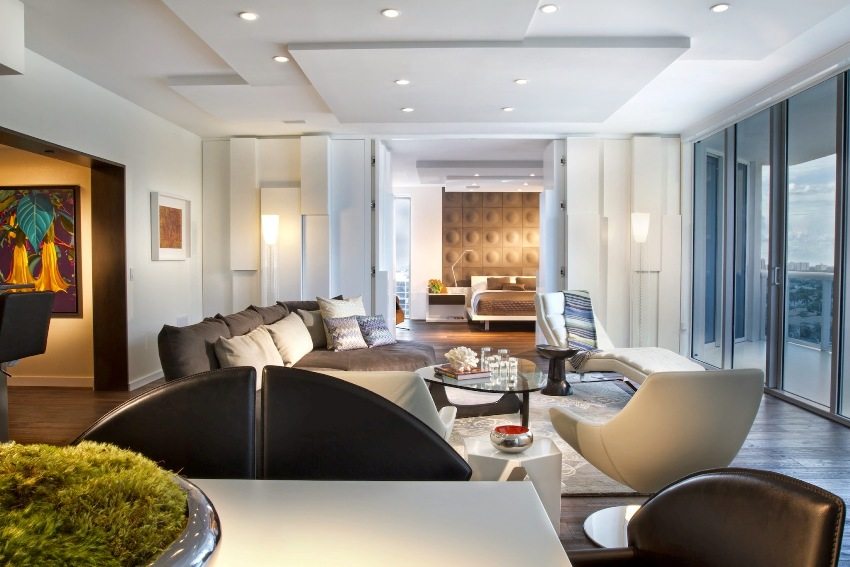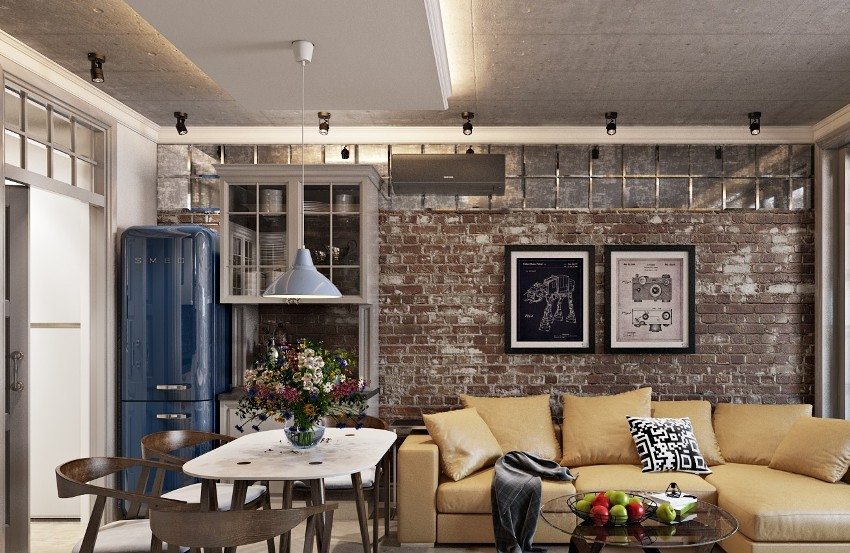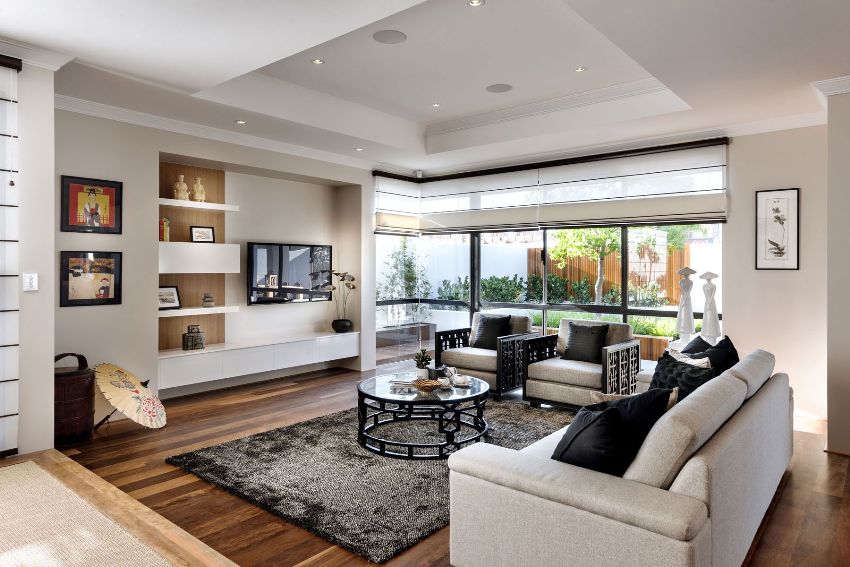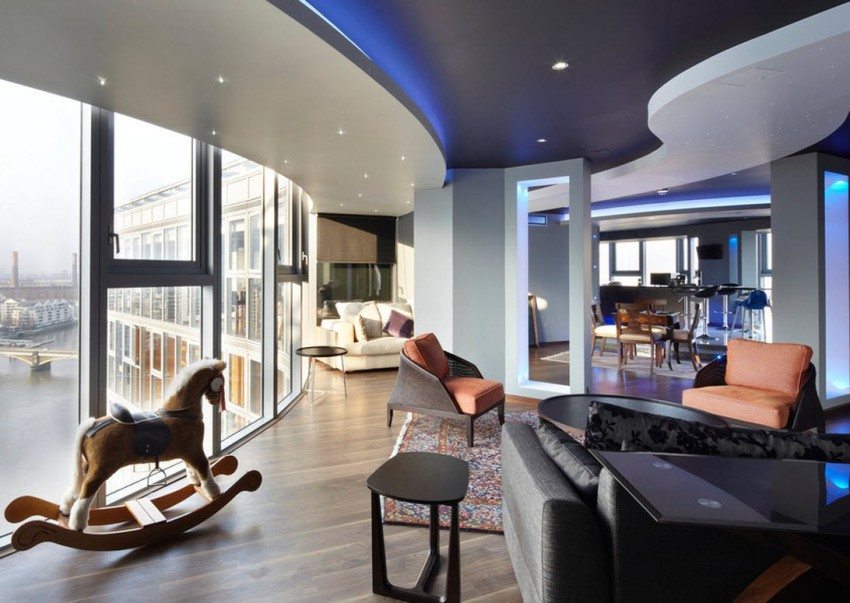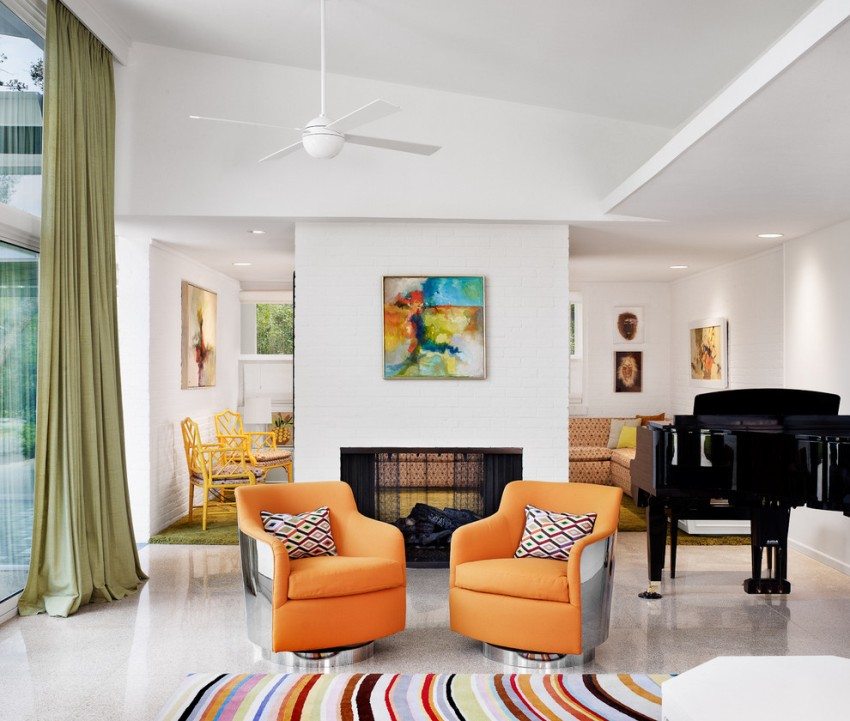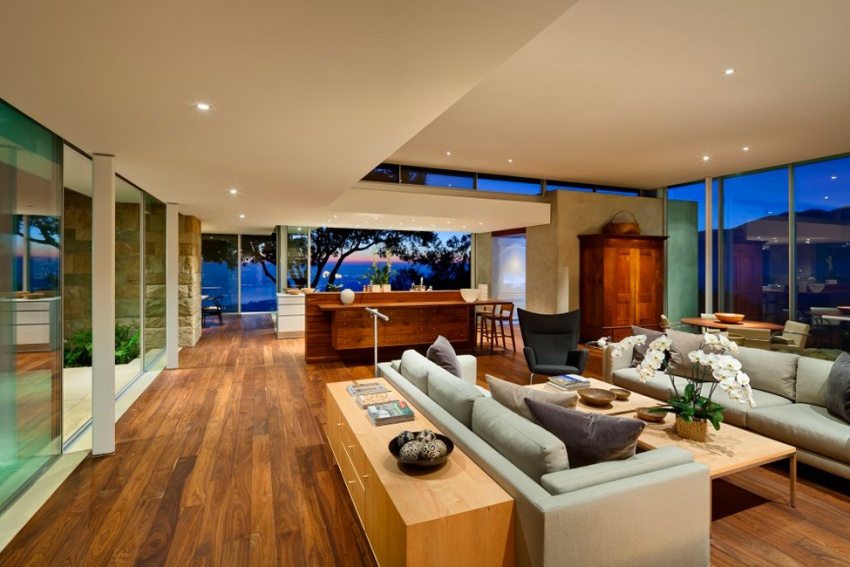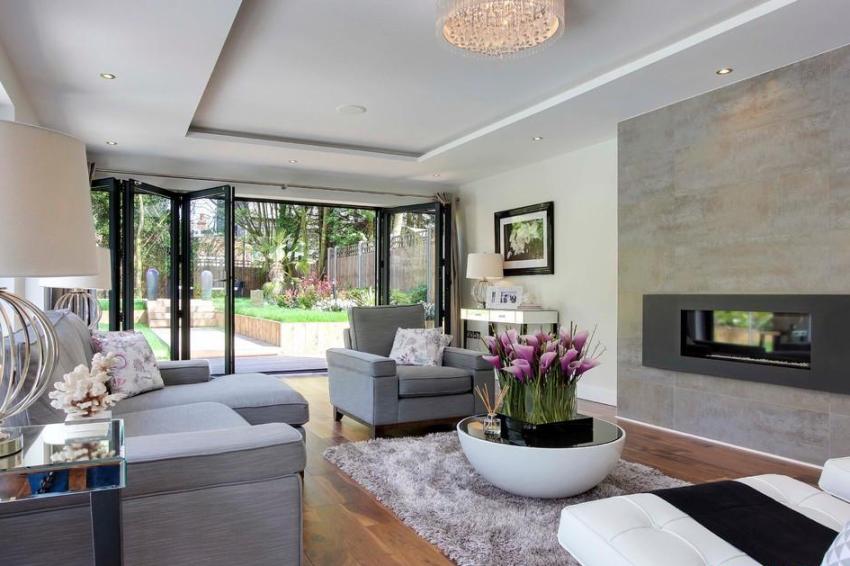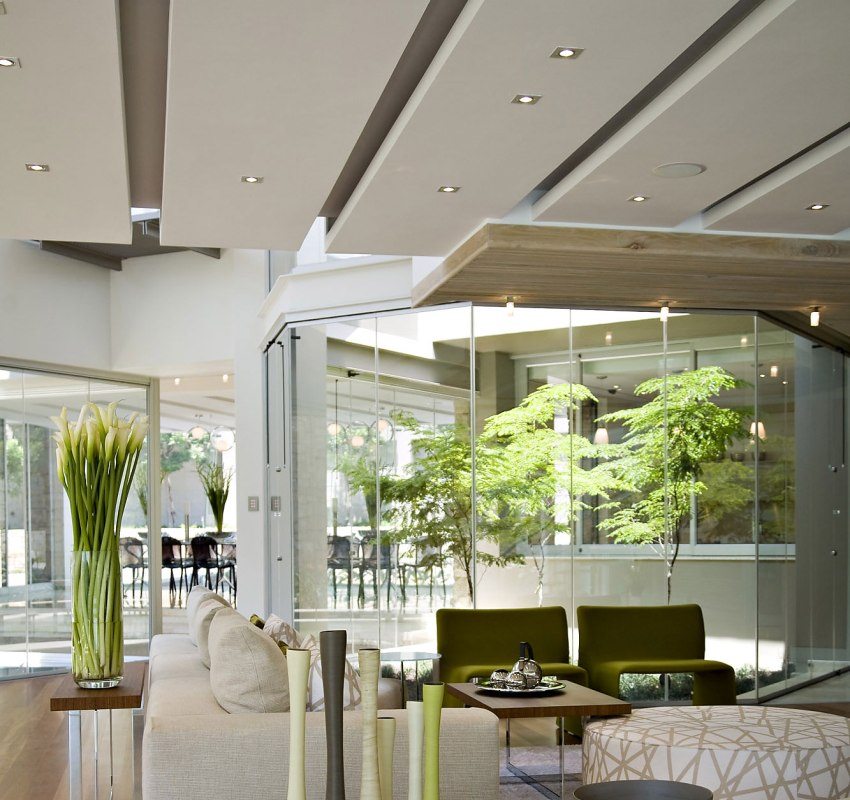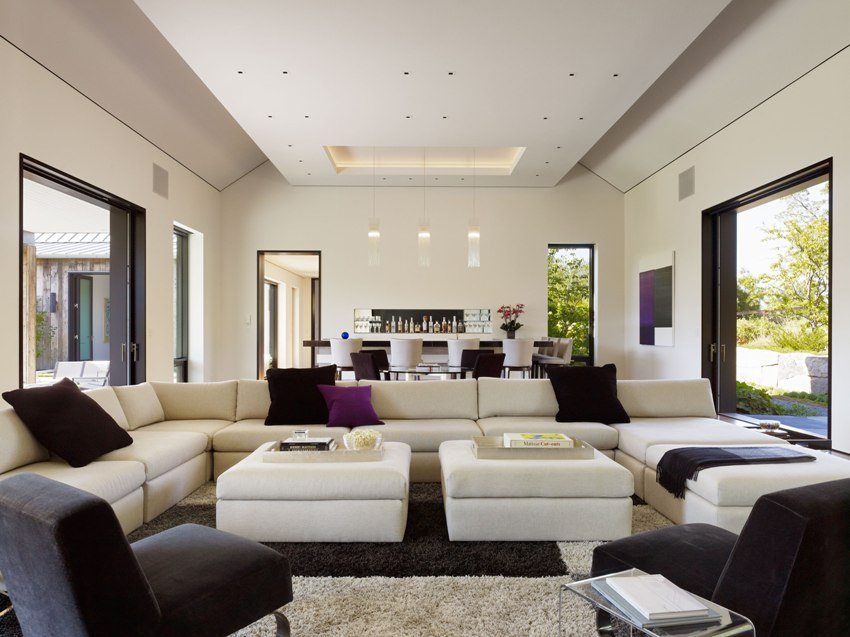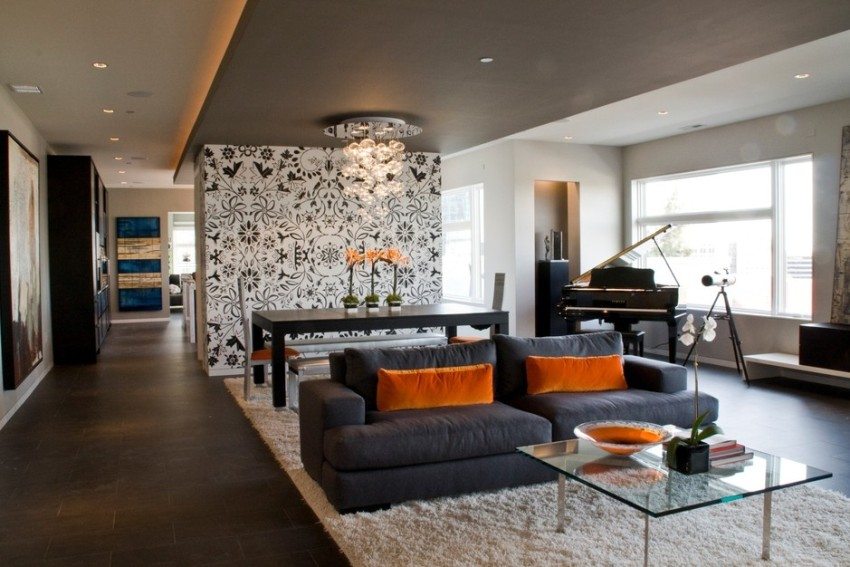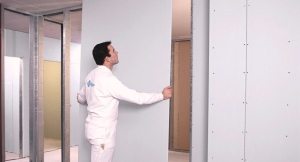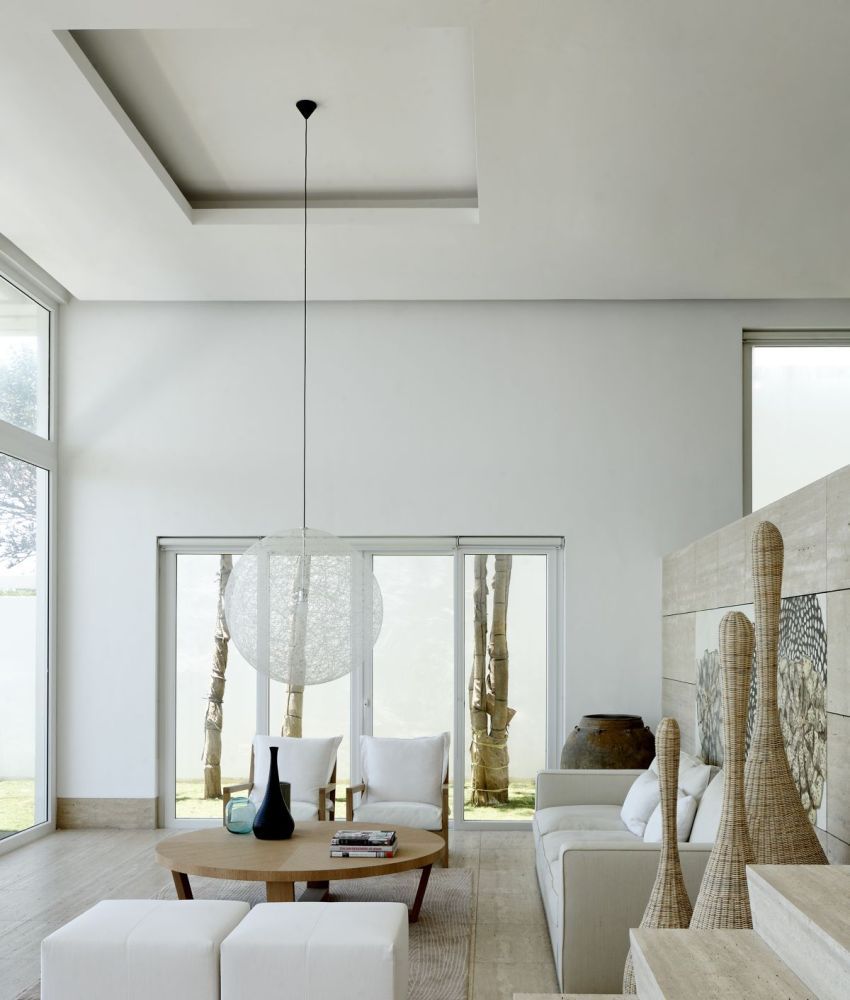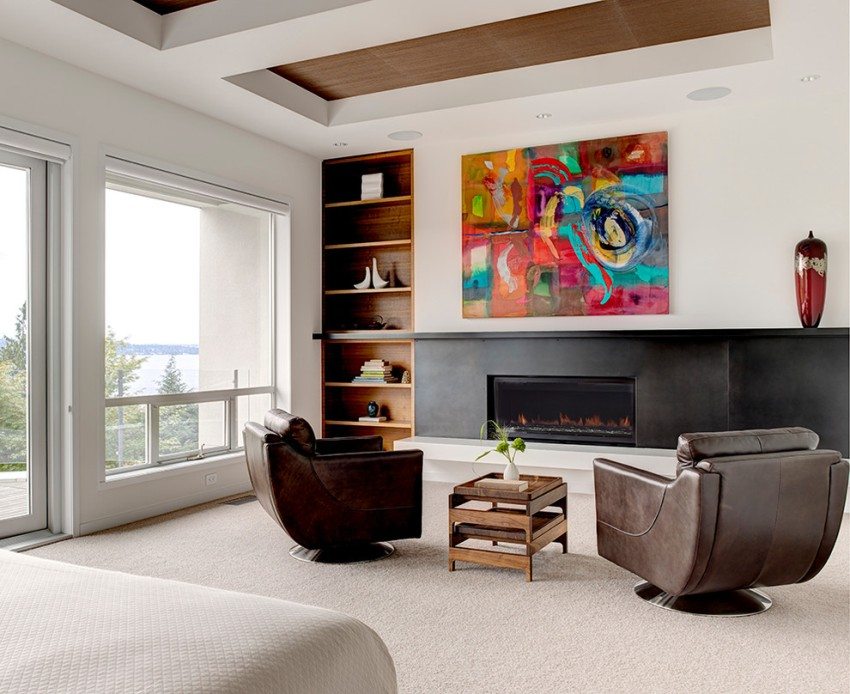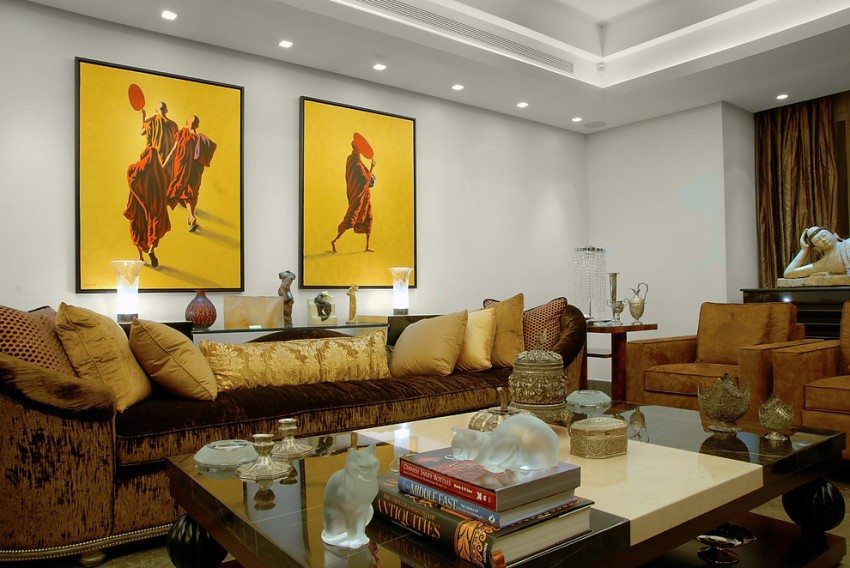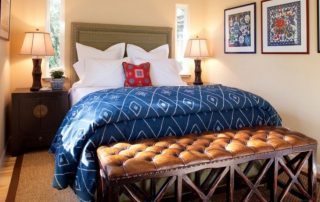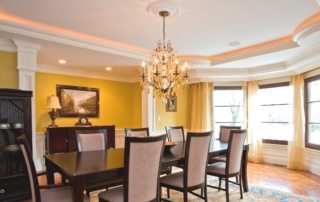Two-level plasterboard ceilings for the living room, photos of which in great abundance decorate the sites of construction companies, can be made independently. After all, such a versatile and affordable material as drywall helps to embody the most non-trivial design idea. In order to radically transform the most ordinary apartment, you need to have plasterboard sheets, metal profiles and desire.
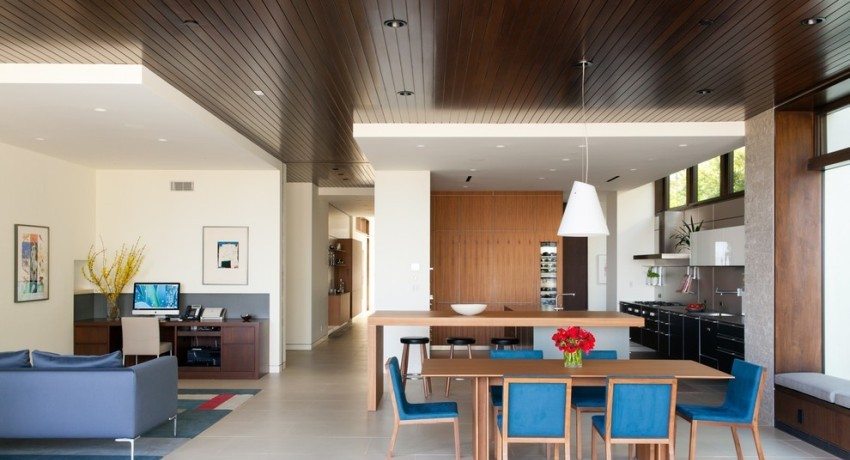
Two-tier ceiling in the kitchen-living room
Content [Hide]
Ideas for two-level plasterboard living room ceilings, photo options
Design fantasy has no boundaries. Who could have predicted just 10-15 years ago that "Roman" molding is not the limit for decoration for ceilings. It was impossible to imagine that the image of the sky could be easily "transferred" to any ceiling, creating the illusion of the presence of clouds or a star vault overhead, that it may well look multicolored and thematic, and not just a white square, that "uneven ceiling" would mean not allowed in work, marriage, but multilevel.
Modern renovation necessarily involves paying enough attention to the ceiling and presents a lot of options for improving the living room by constructing a ceiling made of gypsum plasterboard and decorating it. Suspended structures made of plasterboard differ in a variety of shapes and patterns, the number of decorative elements and the type of lighting:
- laconic two-level plasterboard ceilings for the living room, the photo of which is distinguished by clearly marked lines, made in high-tech style. Typically, designers want to highlight the perimeter, or to focus on one of the corners, outlining the desired object with straight or wavy contours. Moreover, in this place they localize Spotlights;
- elegant ornate ceilings with decor that goes beyond the usual, but does not reach excessive, decor. Such ceilings can be molded, combine different types of decor, or several shades of color. The elegance and originality of such a living room can be given by a certain theme, which is emphasized on the ceiling zone: floral motifs, yin and yang, arched, stepped, transitional zones with different lighting (when one pattern becomes a continuation for another, however, it differs somewhat stylistically or the intensity of the organization of the lighting) ;
- the ceiling that turns into the floor is one of the most original solutions. Its main idea is one element that unites the space between the floor and the two-level ceiling.It can be a block that divides the living room into zones, placed in the center of the ceiling and descending to the floor. The curly over-door arch, which is the descending part of the ceiling, looks good in the interior. The niche for the TV is also remarkable, which is made in the form of a wavy or strict element emerging from the floor. It reaches the ceiling and "dissolves" in it.
Plasterboard ceilings for the living room, photo which depict any, the most non-standard ideas, make the interior of this room unique.
Helpful advice! If your apartment is located in an ordinary panel high-rise building, then you do not need to get too carried away by creating many levels. To update the look of an apartment, two are enough. Otherwise, the ceiling may turn out to be too low and overhanging.
How to build a two-level plasterboard ceiling with your own hands
It doesn't matter how many levels you have plasterboard ceiling... The principle of their construction is always the same. The only difference is in the final decoration and design. Well, the more levels and decorative elements, the more labor and material will have to be spent. Before starting the installation of a ceiling with two levels, you need to estimate the height of the room. Two levels will take at least 10-15 cm, so if such losses are significant, then it is better to abandon the idea.
If the "native" ceiling is flat enough, then the second level can be mounted directly on it. This will save space. The more complex the conceived design, the more accurate the calculations need to be. And more helpers will be needed. It is hardly possible for one person to do a job well. It is better if you have a detailed project or at least a sketch of the ceiling.
What materials and tools will be needed
For the production of the entire cycle of work on the installation of a two-level plasterboard ceiling with your own hands, you will need the following tool:
- not less than 5 meter tape measure;
- construction knife;
- cordless screwdriver;
- manual puncher;
- sandpaper;
- two building levels, both bubble and hydro;
- starting, longitudinal and bearing metal profiles;
- dowels and screws;
- special connection for profiles called crab;
- putty suitable for drywall;
- plasterboard trowel;
- plane for plasterboard;
- scissors for cutting metal;
- textile gloves and goggles;
- CD and UD profiles;
- wedge anchor for fastening;
- angular and two-level connectors.
As a basis, use the usual 9.5 mm ceiling plasterboard, and for the installation of the second tier it is better to use an arched one having a thickness of 6 mm.
Helpful advice! When the living room is small, there is no need to overload its space by creating too bulky structures on the ceiling. This will cut the room in half. The best solution for small rooms is a flat, classic white ceiling. Sometimes it is possible to mount a plasterboard box, and install spotlights along the walls.
Ceiling construction step by step
In a few steps, you can build a two-level plasterboard ceiling for the living room. A photo each of them can be studied in detail.
Related article:
|
Step 1... Clean the room in which the installation will be carried out from furniture and all foreign objects. Measure the height of each corner. The lowest becomes a reference point for marking. Use levels to draw the required marking lines. You don't need to draw too much to avoid confusion.
Step 2... Start fixing the UD profiles first. They are mounted on the wall around the perimeter of the entire room, as they are load-bearing. Install a straight hanger on the points that you marked on the ceiling, and on it a CD profile. To give the structure the necessary rigidity, be sure to use crabs. Sew up the resulting frame with drywall sheets.
Step 3... For marking the second level, the lines for installing the profiles are not drawn, but a drawing is directly applied, which is the prototype of future geometric shapes on the ceiling. Even if you follow the instructions strictly, you will not always get perfect plasterboard ceilings for the living room. Photos of some "masterpieces" confirm this. And all because in addition to the skill and accuracy of editing, you also need to be able to draw. If you do not have the ability to do this, then it is better to ask someone so as not to spoil all your work.
Step 4... The ceiling (UD) frame is fixed to the ceiling and wall, rounding and shaping, if necessary, corresponding to the drawn pattern. To lower the frame to the desired length, use a CD profile. It is cut into pieces of its design length and sharp cuts are made at one end. They are inserted into the UD profile guide with straight edges every 500-600 mm. After they all stand upright, a UD profile is put on them and the finished structure is attached. To obtain a more reliable frame, make another piece of the CD profile equal in size to the distance from the wall to the side edge. It is fixed between the sidewall and the UD profile on the wall.
Step 5... When our frame is ready, little by little we begin to sheathe it with drywall, cut out according to the template. To give curves, you can use an awl, which makes many punctures along the fold line, and wetting with water. In conclusion, the seams are carefully putty and the backlight is installed, the wires for which must be pre-threaded along the profiles.
